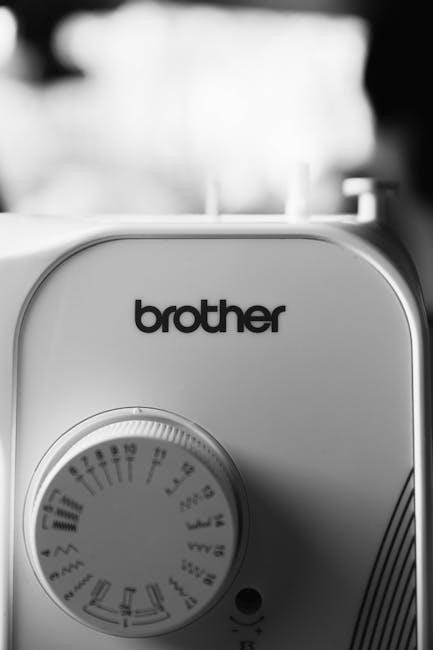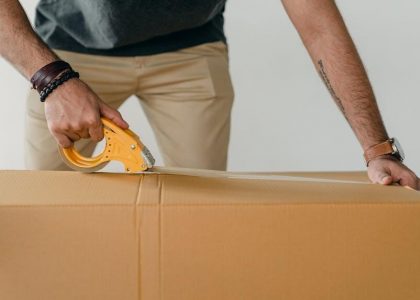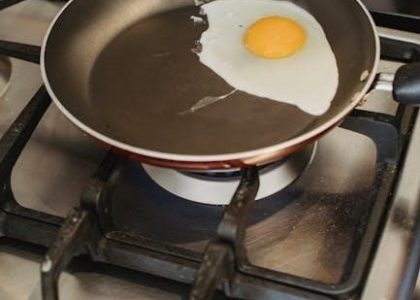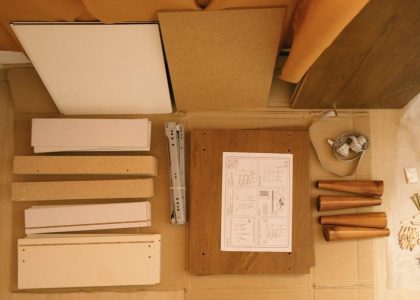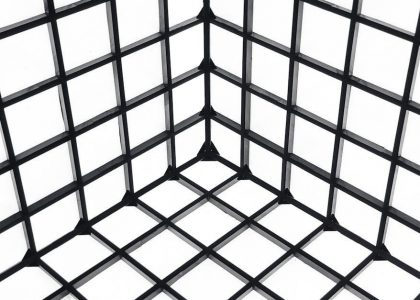The Brother Project Runway sewing machine is a popular choice, known for its user-friendly features and versatility. Many users seek the instruction manual to fully utilize its capabilities. The manual guides users through setup, operation, and troubleshooting, ensuring a smooth sewing experience.
Overview of the Project Runway Series
The Brother Project Runway series sewing machines are designed to inspire creativity and provide tools for both beginners and experienced sewers. These machines often come with unique features and accessories tailored to fashion sewing and design. The series aims to bring the excitement and innovation of the “Project Runway” television show into the homes of sewing enthusiasts.
These machines are known for their ease of use, versatility, and range of built-in stitches. They are designed to handle a variety of fabrics and projects, from basic alterations to complex garment construction. The Project Runway series machines often include features such as automatic needle threading, drop-in bobbins, and adjustable stitch settings, making them ideal for both novice and advanced users.
The instruction manual is a valuable resource for understanding and utilizing all the features of these machines.

Key Features and Components
Understanding the key features and components of your Brother Project Runway sewing machine is crucial. The instruction manual provides detailed diagrams and explanations. This knowledge ensures correct usage and optimal performance for all your sewing projects.
Identifying Machine Parts
The Brother Project Runway sewing machine boasts various parts, each with a specific function. The instruction manual is essential for identifying these components. Key parts include the needle, presser foot, bobbin winder, and stitch selector. Understanding their locations and purposes is vital for proper operation. The manual details the function of components such as the spool pin, thread guides, tension dial, and feed dogs, explaining how each impacts stitch quality and fabric handling. Recognizing the handwheel, reverse lever, and power switch ensures safe and controlled sewing. This knowledge empowers users to confidently navigate the machine’s features. Furthermore, the manual offers insight into the accessory compartment and any included tools, ensuring all machine parts are easily identifiable and understood for optimal sewing.
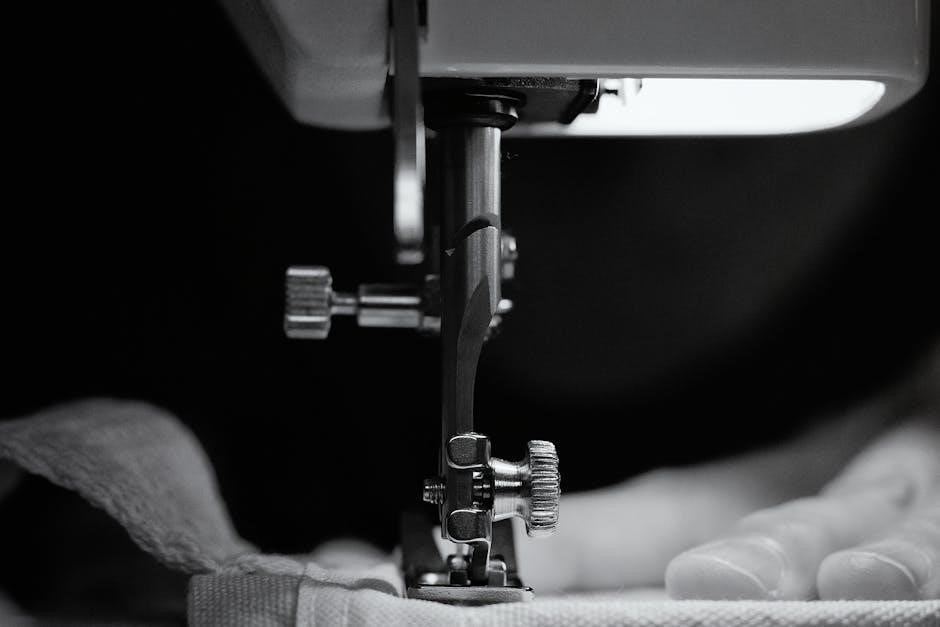
Getting Started: Basic Operations
Basic operations involve threading the machine and preparing the bobbin. The instruction manual provides step-by-step guidance. Correctly performing these steps ensures smooth sewing and prevents common issues.
Threading the Machine
Threading the Brother Project Runway sewing machine correctly is crucial for optimal performance, and the instruction manual offers detailed guidance. Following the numbered diagram in the manual is highly recommended to avoid common threading errors. Start by placing the spool of thread on the spool pin, ensuring it’s securely in place. Next, guide the thread through the thread guides, maintaining consistent tension. Lower the presser foot lifter to ensure proper thread placement.
Continue threading through the tension disc, ensuring the thread sits snugly. Then, guide the thread down to the lower thread guide and back up towards the take-up lever. Thread the take-up lever from right to left, then guide the thread down through the remaining thread guides before threading the needle from front to back. Improper threading can lead to skipped stitches or tangled thread, so consult the manual for clarification.
Bobbin Winding and Insertion
The Brother Project Runway sewing machine requires a properly wound and inserted bobbin for seamless sewing, and the manual provides clear instructions. To wind the bobbin, first, place the thread spool on the spool pin and follow the thread guide to the bobbin winder tension disc. Wind the thread around the bobbin a few times and then place the bobbin on the bobbin winder shaft. Push the bobbin winder shaft to the right to start winding.
Once the bobbin is full, it will stop automatically. Push the shaft back to the left and remove the bobbin. To insert the bobbin, open the bobbin case cover and place the bobbin inside, ensuring the thread unwinds in the correct direction as indicated in the manual. Guide the thread through the slit in the bobbin case and pull it gently. Close the bobbin case cover securely.
Stitch Selection and Settings
The Brother Project Runway sewing machine offers a variety of stitch options. Consult the manual to understand each stitch and its ideal settings for different fabrics and sewing projects.
Exploring Built-in Stitches
The Brother Project Runway sewing machine boasts a range of built-in stitches, each designed for specific purposes. The instruction manual provides a comprehensive guide to these stitches, detailing their applications and how to select them. From basic straight stitches for seams to decorative stitches for embellishments, understanding these options is essential for maximizing the machine’s potential. The manual often includes diagrams illustrating each stitch pattern and recommendations for appropriate fabric types and thread tensions. Experimenting with different stitches allows users to add unique touches to their projects. Users can find guidance on adjusting stitch length and width to achieve desired effects, making the machine a versatile tool for both practical and creative sewing endeavors. Refer to the manual for a complete overview.

Troubleshooting Common Issues
The sewing machine manual addresses common issues, such as the machine not sewing. It provides step-by-step solutions for users to diagnose and resolve problems, ensuring smooth operation and minimizing downtime.
Machine Not Sewing
When the Brother Project Runway sewing machine refuses to sew, consult the manual for troubleshooting steps. The manual often includes detailed instructions on how to resolve the issue. First, ensure the machine is properly plugged into a functioning outlet and switched on. Check the upper thread and bobbin for correct threading and placement; Verify that the presser foot is lowered before starting to sew.
Examine the needle for damage or incorrect installation. A bent or improperly inserted needle can prevent the machine from sewing correctly. Clean any lint or debris from the bobbin area and feed dogs, as these obstructions can hinder fabric movement. If problems persist, refer to specific sections in the manual for advanced troubleshooting or contact Brother support for assistance.
Maintenance and Care
Proper maintenance is crucial for longevity. Consult the manual for cleaning and oiling instructions specific to your model. Regular care ensures smooth operation and prevents costly repairs.
Cleaning and Oiling
To maintain the Brother Project Runway sewing machine’s optimal performance, regular cleaning and oiling are essential. Begin by unplugging the machine to ensure safety. Use a soft brush to remove lint and dust from the bobbin area, feed dogs, and other accessible parts. Refer to the manual for specific instructions on which parts require oiling and the recommended type of sewing machine oil to use.
Apply a small amount of oil to the designated points, avoiding over-oiling, which can attract more dust and debris. After oiling, run the machine on a scrap piece of fabric to remove any excess oil. Clean the exterior of the machine with a soft, damp cloth. Regular cleaning and oiling will prolong the life of your sewing machine and ensure smooth, consistent stitching. Always consult the user manual for detailed instructions and safety precautions.
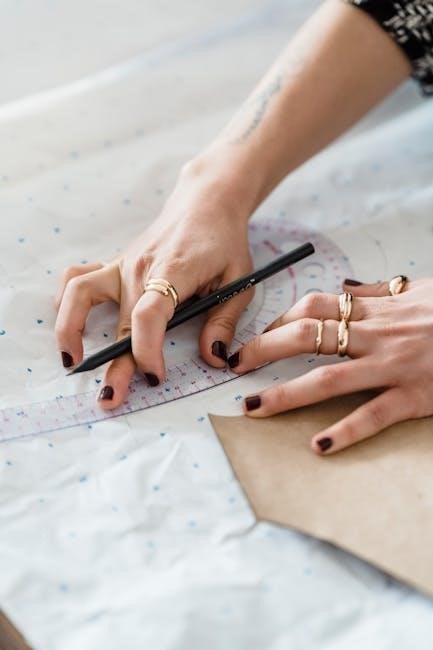
Accessories and Optional Attachments
The Brother Project Runway sewing machine offers a range of accessories to enhance sewing projects. These include various presser feet, extension tables, and specialized tools. These attachments expand the machine’s capabilities and allow for creative sewing techniques.
Presser Feet and Their Uses
The Brother Project Runway sewing machine comes with a variety of presser feet, each designed for specific sewing tasks. The zigzag foot is a general-purpose foot suitable for most sewing projects, while the buttonhole foot creates perfect buttonholes with ease. The zipper foot allows for close stitching along zippers, and the blind stitch foot creates invisible hems.
The overcasting foot prevents fabric from fraying, and the walking foot ensures even feeding of multiple fabric layers. Understanding the function of each presser foot is essential for achieving professional-looking results. The instruction manual provides detailed information on how to attach and use each foot effectively.
Experimenting with different presser feet can unlock new creative possibilities and improve the quality of your sewing projects. Refer to the manual for guidance on selecting the appropriate foot for your desired outcome and how to use it correctly.

